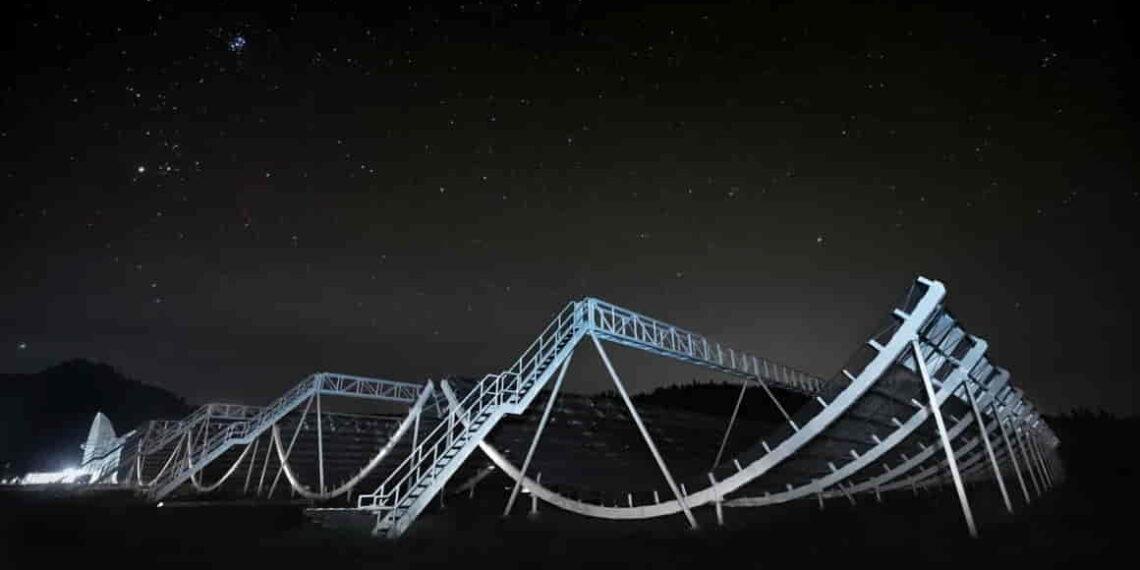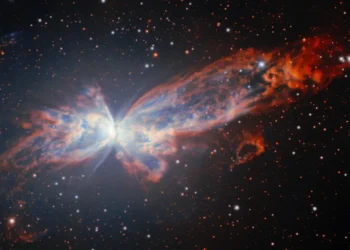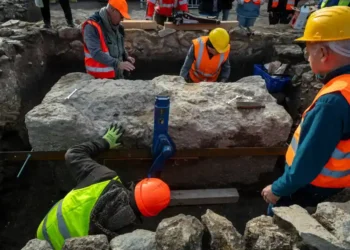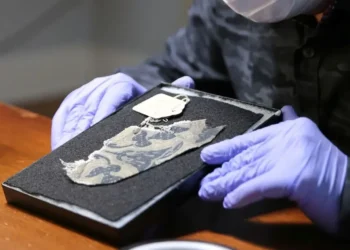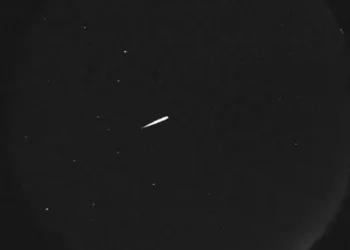Astronomers Uncover New Insights into Mysterious Fast Radio Bursts
Fast radio bursts (FRBs) — brief, intense flashes of radio waves from deep space — have puzzled astronomers since their discovery in 2007. These millisecond-long bursts release as much energy as the sun in a single day, yet their origins remain a mystery. Recent studies have provided exciting new clues that may help unlock the secrets of these enigmatic signals.
FRBs have been detected from as far as 8 billion light-years away, and specialized telescopes like the CHIME (Canadian Hydrogen Intensity Mapping Experiment) radio telescope have been instrumental in uncovering new data. Now, four new studies are shedding light on the possible origins of these bursts, with two new findings offering contrasting explanations.
Diverse Origins of FRBs: A Closer Look
One of the newly discovered fast radio bursts appears to have come from a magnetar, a type of dense, magnetically active neutron star. The other, which exhibited repeated pulses over several months, originated from a distant, dead galaxy that is devoid of new star formation. These diverse sources suggest that FRBs may not have a single origin but could instead come from different types of cosmic environments.
Ryan McKinven, a researcher involved in all four studies, said, “This is a step closer to unraveling a profound cosmic mystery. Every discovery we make about their origins opens a new window into the dynamics of the universe.”
The Magnetar Connection: A Twinkling Mystery
One of the fast radio bursts, named FRB 20221022A, caught the attention of researchers in 2022 when CHIME first detected it. This burst lasted just 2.5 milliseconds and exhibited highly polarized light, suggesting it came from a highly magnetized rotating neutron star, known as a magnetar. Magnetars are known for their intense magnetic fields and are considered one of the most extreme environments in the universe.
The team traced the burst’s source to a galaxy about 200 million light-years away. By analyzing the scintillation — the “twinkling” effect caused by the light filtering through a galaxy’s interstellar medium — the researchers found that the burst originated from a small region near the neutron star. This supports the idea that magnetars could be responsible for generating FRBs, particularly in their magnetically active surroundings.
“We discovered that this FRB exhibits ‘twinkling,’ similar to how stars appear to twinkle in the night sky,” said Dr. Kenzie Nimmo, a co-author of the study. “This indicates that the region where the FRB originated must be incredibly small.”
The team pinpointed the source of the burst to the magnetosphere, a region about 6,213 miles (10,000 kilometers) from the rotating neutron star. This discovery marks the first time astronomers have linked FRBs directly to the magnetosphere of a magnetar.
Signs of Life from an Ancient, Dead Galaxy
In contrast, the second newly discovered FRB, designated FRB 20240209A, presented a completely different origin. Detected in 2024, this burst produced 21 additional pulses over several months. Tracing the bursts, astronomers discovered that they came from the outskirts of an ancient galaxy located 2 billion light-years from Earth.
This galaxy, which is 11.3 billion years old, is no longer producing new stars, yet it is one of the most massive galaxies ever discovered to host an FRB. The burst’s origin from the outer, star-poor regions of the galaxy adds to the mystery, as it suggests that FRBs might also originate from galaxies with little to no active star formation.
“This is among some of the most massive galaxies out there,” said Tarraneh Eftekhari, lead author of the study. “The burst originated from a region about 130,000 light-years from the galaxy’s center, an area where few stars exist.”
The Search Continues
As researchers continue to analyze FRBs, it becomes clear that these mysterious bursts could have multiple sources. While some may come from magnetars, others could emerge from ancient, dead galaxies or other cosmic phenomena. The findings are providing crucial clues that may eventually help scientists understand what causes these powerful and brief signals.
“Each FRB is like its own unique snowflake,” said Wen-fai Fong, an astronomer not involved in the studies. “There’s a great diversity in their origins, and the universe continues to surprise us.”
With the ongoing work of astronomers and advanced telescopes like CHIME, the mystery of fast radio bursts is slowly being unraveled, offering new insights into the universe’s most extreme environments.
This article was rewritten by JournosNews.com based on verified reporting from trusted sources. The content has been independently reviewed, fact-checked, and edited for accuracy, neutrality, tone, and global readability in accordance with Google News and AdSense standards.
All opinions, quotes, or statements from contributors, experts, or sourced organizations do not necessarily reflect the views of JournosNews.com. JournosNews.com maintains full editorial independence from any external funders, sponsors, or organizations.
Stay informed with JournosNews.com — your trusted source for verified global reporting and in-depth analysis. Follow us on Google News, BlueSky, and X for real-time updates.
